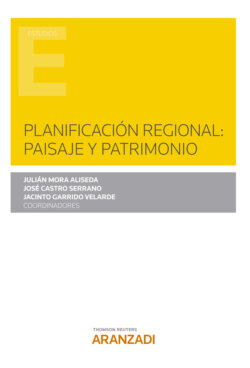Читать книгу Planificación regional: paisaje y patrimonio - José Castro Serrano - Страница 7
На сайте Литреса книга снята с продажи.
I. Introduction
ОглавлениеOne of the most noticeable effects of climate change is the rise in temperatures, linked to increases in greenhouse gas emissions. This is causing various phenomena of unprecedented magnitude around the world. Glaciers are melting faster and faster and, at the same time, the water level in the seas and oceans is rising. Numerous floods and droughts occur in regions where such extreme weather conditions have not been recorded before. These anomalies are having an increasing impact on the economy, the environment, and people’s health and daily lives. Local communities are demanding strong action from local government administrations, national governments, and supranational institutions to combat climate change and mitigate its consequences.
Early action to support the development of a low-carbon economy contributes to job creation and economic growth by stimulating innovation in the sector of clean technology - one that is energy efficient and uses energy from renewable sources. It is also necessary to reduce the speed of climate change (Linnenluecke, Han, Pan, Smith, 2019).
Limitation of global warming is technically feasible and socio-economically viable. That is why the European Commission initiates many activities intended to make the governments of the Member States more sensitive to climate problems and, most importantly, to make them look for their own solutions related to adaptation to climate change.
The sooner this happens, the less costly the adaptation process and the smaller the consequences of the climate change that have occurred to date will be. It is estimated that the cost of adaptation efforts is equal to about 1 percent of the global gross domestic product (GDP). This is much less than the cost we would bear if we did nothing: the price of inaction is estimated at 5 to 20 percent of the global GDP (European Commission 2015).
Effective implementation of adaptation measures requires cooperation on the level of European Union authorities, governments of the member states, as well as regional and local levels of public administration, including residents and other groups of local stakeholders. Although the effects of climate change are clearly visible (e.g. in larger cities), there is little interest in engaging in adaptation measures in many communities and in many cases it is unclear what to do because the climate change policies being developed are drafted in complicated technical language and on a high level of generality (Rodríguez, Ürge-Vorsatz, Barau 2018).
Despite the fact that the most important documents related to EU climate change policy (as well as national and regional documents) are widely available, unfortunately most of their target groups do not sufficiently understand them, and even less frequently strive to implement them.
The project implemented in Poland in the years 2017-2019 can be considered a good practice. Its aim was to transfer the assumptions of national and regional climate change policies into urban climate change adaptation plans that have been developed in 44 Polish cities. These plans were developed with the strong involvement of local stakeholders (local government officials, representatives of social organizations, businesses, and residents). As a result, the planned actions are well correlated with local needs and opportunities, and, moreover, provide concrete feedback to regional authorities on how climate change adaptation policies will be implemented in different parts of the region. A great advantage is the similar scheme of development of all plans, which makes it easy to compare their elements e.g. in several neighboring cities, and thus facilitates coordination of activities (Ayers, Dodman 2010).
This is particularly important in those regions that suffer most from environmental degradation and are strongly affected by climate change. An example of such a region is the Silesian Province (Poland), which has benefited to the greatest extent from implementation of the project titled “Development of climate change adaptation plans in cities with more than 100,000 residents” (www.44mpa.pl 2019) The results of the project indicate that climate change, as a key current environmental issue, is having a very clear impact on local communities and they are increasingly aware of this fact. This problem can only be solved through implementation of specific actions, tailored to the needs of local communities, in the design and creation of which residents themselves and other stakeholders participate.
Thus, the paper presents the proposition that a bottom-up design of climate change adaptation plans for cities is necessary, so that they align with regional environmental policies, while being tailored to local needs and possibilities. However, the most important thing is to involve the largest possible group of stakeholders in the planned activities, because only cooperation and synergic use of potentials and capacities of various partners will guarantee achievement of planned results.
The aim of this paper is to present a good practice that refers to an integrated process of development of local climate change adaptation plans and, on their basis, revising regional policies to better match the real needs of local communities. In the study, qualitative research was performed using the following methods: desk research, case study, and diagnostic survey with residents of 44 cities participating in the analyzed project. The project presented in the paper was carried out in the entire country in the years 2017-2019; however, the analyses of the research results included in the text concern mainly the Silesian Province.
